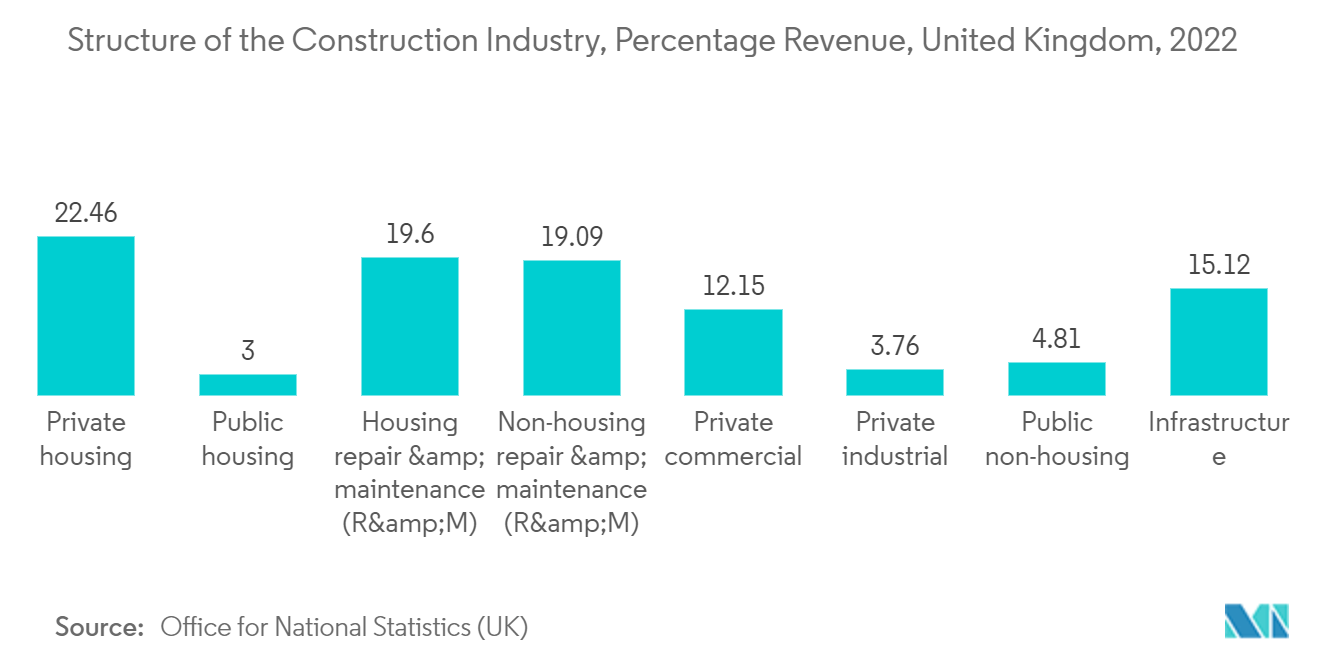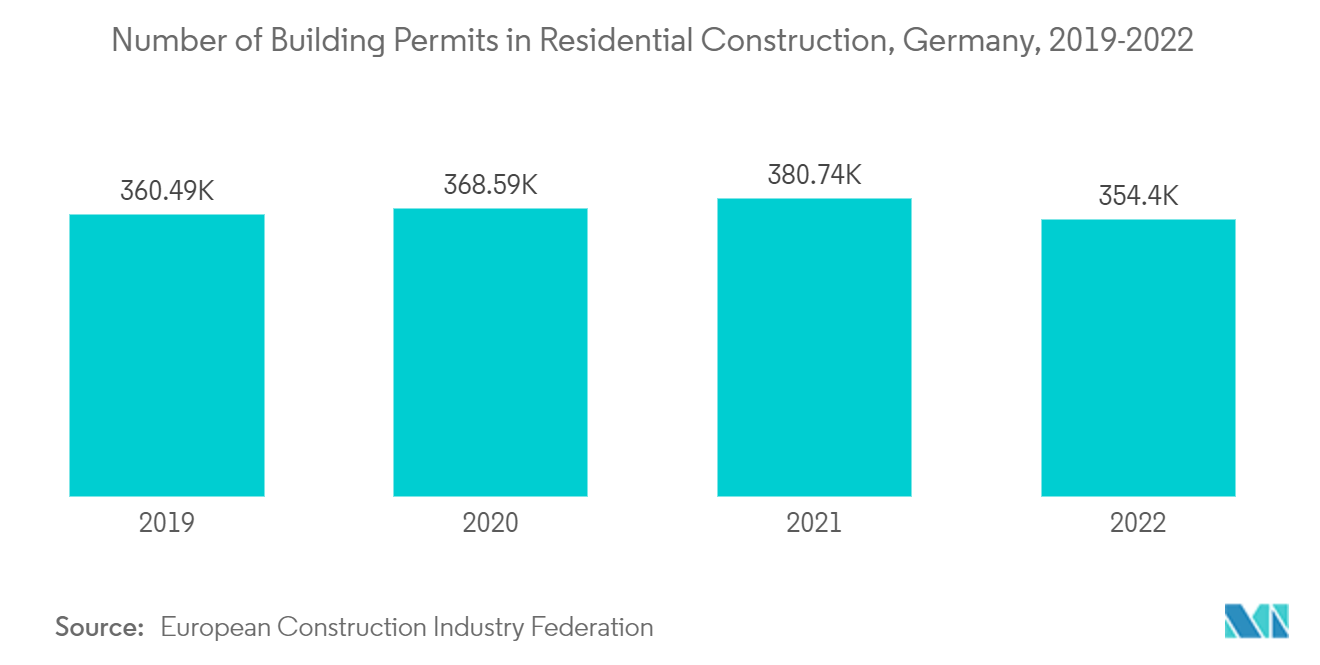Market Trends of Europe Green Cement Industry
Residential Construction to Dominate the Market
- The European Union (EU) has set a target of reducing buildings’ greenhouse gas emissions by 60% by the end of 2030. The EU further plans to ensure the buildings are fully decarbonized by 2050.
- The European Commission has announced a renovation wave to improve the energy performance of buildings across the European Union. The goal is to double renovation rates by 2030, renovating 35 million buildings and creating up to 160,000 new green jobs in the construction sector. The European Commission aims to ensure energy and resource efficiency through the construction of green buildings.
- According to the Italian National Building Association (ANCE), to meet the goals of the European green building pact, 1.8 million residential buildings will have to be upgraded over the next ten years until 2033 at a cost of EUR 400 billion (~USD 439.29 billion).
- According to their estimates, a further EUR 190 billion (~USD 208.66 billion) will be needed to bring commercial properties to the required standards. In February 2023, Italy struck a deal with the European Union to use EUR 15.3 billion (USD 16.80 billion) from a post-COVID-19 EU recovery fund to improve the energy efficiency of buildings.
- According to the Office for National Statistics, in the United Kingdom, the construction of 118,410 residential units started in 2022. The number of completed projects stood at 104,680 units. These figures are promising as the construction activities in the country have risen to pre-pandemic levels.
- The French government's initiatives to develop the city for hosting the 2024 Olympics will likely drive the market. For instance, the French government sanctioned approximately USD 3.3 billion to construct the Hermitage towers (two 320-meter-1050-foot), which are due to be completed by 2024. The essential infrastructure for the Olympic event requires building 4,500 new dwellings for local people, 100,000 square meters for business activities, and 20,000 new hotel rooms for tourists.
- Courtesy of the growing empasis on the construction of green buildings in the region, the demand for green cement shall remain strong in the forecast period in the residential construction sector.

Germany to Dominate the Market
- According to the European Construction Industry Federation, the new construction order value in Germany in 2022 was EUR 99 billion (USD 107.72 billion), 4.8% more than that of 2021.
- According to the German Federal Statistical Office, the number of building permits in residential construction was 354,403 in 2022. A total of 68,700 residential building licenses were issued from January to March 2023, a decrease of 25.7% from the same period in the previous year (January to March 2022: 92,500 building permits). The drop in construction projects is most likely being caused by the high cost of building materials and the aftereffects of the Russia-Ukraine Crisis.
- However, the construction of hotels in Germany is expected to witness a sharp rise during the forecast period. The year 2022 saw the launch of 89 new hotels and 15,780 rooms. 78 more projects with 13,073 keys have been mooted for 2023. According to Hospitality Investor, as of Q3 of 2023, a total of 201 new hotels representing 32,889 rooms had been in the pipeline. The hotel construction project pipeline is anticipated to stay strong for 2024 and beyond, with 153 projects and 22,769 rooms already in the works.
- The German government plans to build 400,000 new apartments a year, of which 100,000 are to be publicly subsidized. The majority of these apartments are a part of the country's goal of being climate-neutral by 2045. The figures are more than 50,000 units higher than the current goal and 100,000 more than the construction industry has managed to build in 2022.
- According to the Federal Environment Agency, buildings in Germany emitted a total of 115 million tons of greenhouse gases in 2022, 3.3% less than in 2021. However, the sector continues to fall short of the federal government’s annual savings target of 113 million tons of carbon dioxide.
- The government has been pushing to meet the target of being carbon-neutral by 2045 by improving the policies that will add to the demand for green cement in the country.
- Thus, Germany is expected to maintain its dominance in the demand for green cement in Europe.


